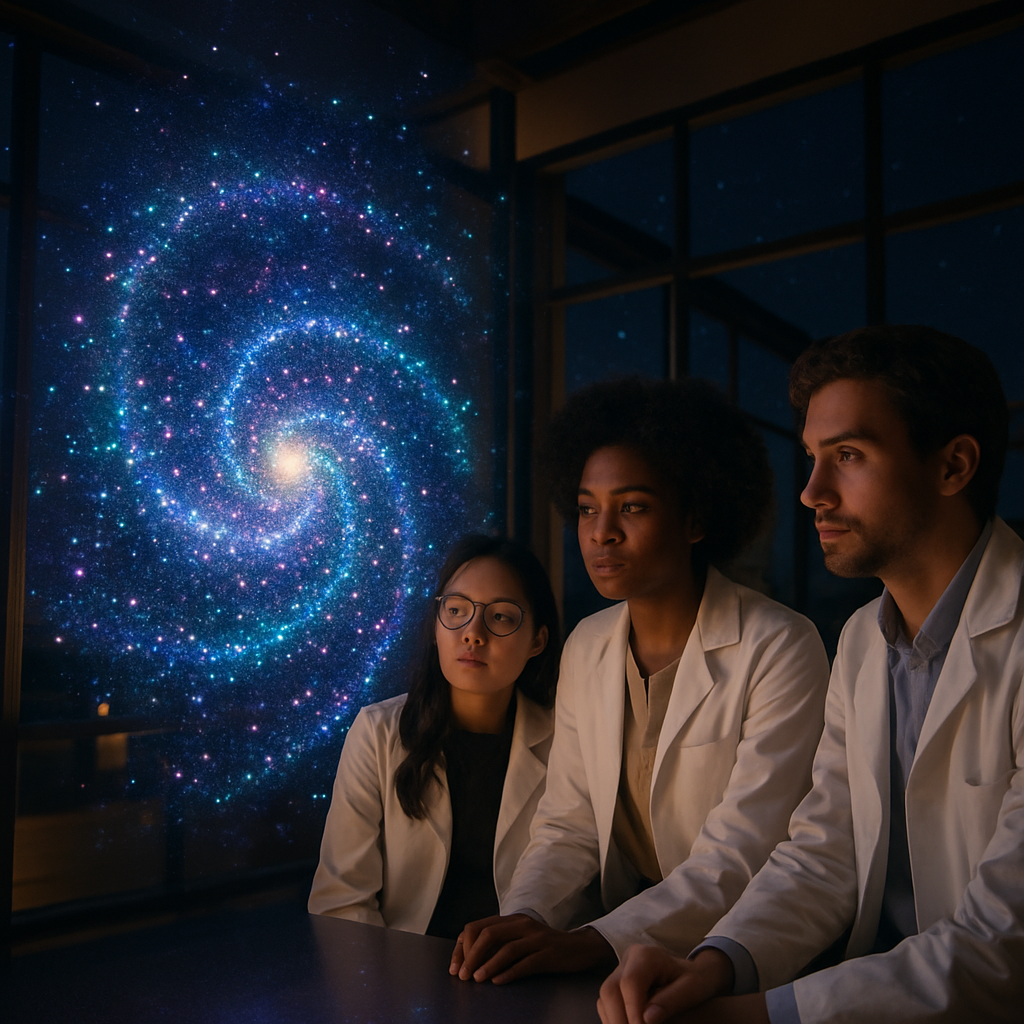
Beneath the surface of our observable universe swims a vast ocean of quantum particles, darting and swirling in patterns that would make even the most synchronized school of fish seem chaotic by comparison. These subatomic entities the plankton of physical reality perform an elaborate ballet that both follows strict choreography and embraces wild improvisation. Their movements, invisible to our naked eyes, form the currents that shape everything from the smallest coral polyp to the mightiest blue whale of a galaxy.
Quantum physics often feels as mysterious as the deepest ocean trenches places where strange creatures follow unfamiliar rules. Yet these microscopic dancers create the very fabric of our macroscopic world, moving to rhythms that sometimes defy our intuition but never truly defy logic. They’re just swimming in waters where classical physics can’t breathe.
The Tidal Forces of Quantum Behavior
When you wade into the shallows of quantum mechanics, you quickly discover that particles don’t behave like the solid objects we’re used to on dry land. Instead, they exist as probability waves more like ripples spreading across a pond than definite objects. This wave-particle duality means quantum entities can be in multiple places simultaneously, a phenomenon called superposition.
I remember trying to explain this to my nephew while we were fishing. “See that bobber?” I asked him, pointing to the red and white float on his line. “Imagine if it could be both on the surface AND underwater at the same time until you actually looked at it. That’s kind of what electrons do.”
He looked at me like I’d swallowed seawater.
But superposition is just the beginning of quantum weirdness. These particles also exhibit entanglement a connection so profound that Einstein called it “spooky action at a distance.” When two particles become entangled, they form a single quantum system. Measure one particle, and you instantly know something about its partner, even if they’ve drifted to opposite sides of the ocean.
This isn’t just abstract theory. Quantum entanglement has been demonstrated in laboratories across the world. In 2022, researchers at the University of Science and Technology of China demonstrated entanglement between particles separated by 1,200 kilometers. That’s like having two fish that somehow know exactly what the other is doing despite swimming in different oceans.
The quantum world also features tunneling where particles pass through energy barriers that should be impassable, like a dolphin somehow swimming through a solid coral reef without disturbing a single polyp. This phenomenon makes nuclear fusion possible in stars and enables certain types of microscopy that let us peer deeper into the molecular world.
The Quantum Current Shapes Our Universe
These strange quantum behaviors might seem like curiosities confined to physics labs, but they’re actually fundamental to everything around us. The stability of atoms, the chemistry of life, and even the birth of stars all depend on quantum effects.
Consider the humble electron. Classical physics would predict that electrons should spiral into the nucleus of atoms, causing all matter to collapse. But quantum mechanics reveals that electrons exist in probability clouds around nuclei, never in exact positions, maintaining atomic structure through their wave-like properties.
“I used to think electrons were just tiny planets orbiting atomic nuclei,” a physicist colleague once told me over coffee. “But now I see them more like a school of fish that forms a protective sphere around the nucleus never in one spot, always moving, yet somehow maintaining a consistent pattern.”
Quantum mechanics also explains why the sun shines. Nuclear fusion in the sun’s core depends on quantum tunneling to overcome the electrostatic repulsion between positively charged protons. Without this quantum effect, stars wouldn’t ignite, planets wouldn’t form, and life as we know it wouldn’t exist.
But perhaps the most profound impact of quantum mechanics lies in how it shapes space-time itself. According to quantum field theory, what we perceive as empty space is actually teeming with virtual particles pairs of particles and antiparticles that briefly pop into existence before annihilating each other. This quantum foam creates tiny fluctuations in the fabric of space-time, like miniature waves on an otherwise calm sea.
These quantum fluctuations played a crucial role in the early universe. During cosmic inflation the period of rapid expansion right after the Big Bang quantum fluctuations were stretched to cosmic scales, seeding the density variations that would eventually grow into galaxies and galaxy clusters. In a very real sense, the largest structures in our universe were born from quantum-scale ripples.
The implications swim deeper still. Stephen Hawking showed that quantum effects near black hole event horizons cause them to emit radiation now called Hawking radiation. This suggests that black holes aren’t completely black and will eventually evaporate, returning their mass-energy to the universe like water returning to the sea.
Quantum mechanics even suggests our universe might be one of many in a vast multiverse different realities branching off like currents splitting around an archipelago. While this remains speculative, it emerges naturally from certain interpretations of quantum theory.
The dance between quantum mechanics and gravity remains one of physics’ greatest unsolved puzzles. General relativity describes gravity as the curvature of space-time caused by mass and energy, while quantum mechanics describes particles through probability waves. Reconciling these frameworks has proven as challenging as teaching a shark to breathe air.
Various approaches to quantum gravity string theory, loop quantum gravity, causal set theory attempt to merge these perspectives. Each offers a different vision of reality at its most fundamental level, whether it’s vibrating strings, discrete chunks of space-time, or networks of causal relationships.
Dr. Carlo Rovelli, a theoretical physicist at Aix-Marseille University, describes space-time in loop quantum gravity as “not fundamental but emergent, like the surface of water emerging from interactions between water molecules.” This perspective turns our understanding upside-down space and time might not be the container for physical processes but rather emerge from quantum interactions, like waves forming from the collective motion of water molecules.
Quantum mechanics also raises profound questions about the nature of reality and consciousness. The measurement problem why quantum systems seem to “collapse” from multiple possibilities to definite states when observed has spawned various interpretations, from the Many-Worlds theory to the Copenhagen interpretation to quantum decoherence.
Some researchers, like Roger Penrose at Oxford University, have even proposed that quantum processes in brain microtubules might play a role in consciousness. While controversial, these ideas highlight how quantum physics stretches beyond the purely physical into questions of mind and reality.
The practical applications of quantum physics continue to multiply like spawning coral. Quantum computers leverage superposition and entanglement to perform certain calculations exponentially faster than classical computers. Quantum cryptography offers theoretically unbreakable encryption. Quantum sensors achieve unprecedented precision in measuring gravity, time, and electromagnetic fields.
Companies like IBM, Google, and D-Wave have built quantum computers with dozens or even thousands of qubits. While still limited compared to their theoretical potential, these systems have demonstrated “quantum supremacy” solving problems beyond the practical reach of classical supercomputers.
Quantum technologies might eventually transform medicine through ultra-precise imaging, materials science through better simulation of molecular properties, and artificial intelligence through quantum machine learning algorithms. The quantum sea is vast, and we’ve only begun to explore its depths.
The symphony of quantum particles continues to play, whether we’re listening or not. These tiny dancers follow rules that seem bizarre from our macroscopic perspective but make perfect sense in their own domain. Their cosmic dance creates everything we see and experience from the smallest pebble on a beach to the most distant galaxy.
As we continue exploring these quantum waters, we’ll likely discover even stranger phenomena and more profound connections. The quantum world reminds us that reality is richer and more mysterious than our everyday experience suggests not because it’s magical, but because it follows patterns our minds didn’t evolve to intuitively grasp.
Like deep-sea creatures adapted to pressures that would crush surface dwellers, quantum particles thrive in a realm with its own natural laws. By studying their behavior, we catch glimpses of nature’s most fundamental currents the tides and eddies that shape our universe from the bottom up.

